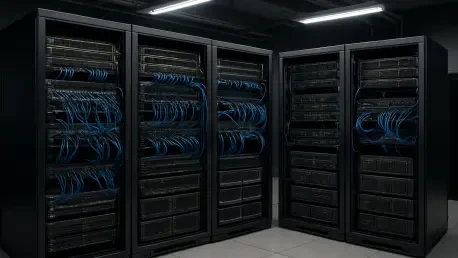In the heart of a bustling corporate data center, a critical server crashes at 2 a.m., threatening to derail operations for a multinational firm, while IT teams scramble to navigate a web of interconnected systems—spanning cloud platforms, legacy hardware, and countless applications—turning a simple fix into a labyrinth of guesswork. This scenario plays out daily across industries, costing businesses millions in downtime and lost productivity. How can such chaos be tamed? Enter Configuration Management Databases (CMDBs), the unsung heroes of IT management, poised to transform complexity into streamlined efficiency.
The significance of CMDBs cannot be overstated in an era where IT infrastructure underpins every facet of business. As organizations grapple with sprawling hybrid environments and relentless digital transformation, the need for a centralized “single source of truth” becomes paramount. CMDBs offer a structured way to track assets, map dependencies, and predict the impact of changes, ultimately slashing downtime and bolstering security. This article delves into the power of these tools, exploring their critical role, real-world impact, and actionable strategies for implementation.
Why IT Complexity Poses a Constant Challenge
Modern IT environments resemble intricate puzzles, with pieces scattered across on-premises servers, cloud platforms, and remote endpoints. A single misstep, like an untracked software update, can cascade into widespread outages, exposing vulnerabilities and frustrating stakeholders. The sheer volume of components—often numbering in the thousands for large enterprises—makes manual tracking an impossible feat, leaving teams vulnerable to costly errors.
This growing intricacy stems from trends like remote work, which has exploded in adoption, and the integration of diverse cloud solutions. Without a clear map of how these elements interact, IT departments face prolonged incident resolution times and heightened risks of non-compliance with regulatory standards. CMDBs emerge as a vital solution, providing the visibility needed to navigate this maze and prevent small issues from snowballing into crises.
The Urgent Demand for Control in Expanding IT Landscapes
As businesses scale, so does the sprawl of their digital footprint, encompassing everything from virtual machines to IoT devices. This expansion amplifies pain points such as unexpected downtime, with studies estimating that large organizations lose an average of $300,000 per hour during system failures. Security breaches, often linked to untracked assets, add another layer of urgency, alongside the ever-looming threat of compliance penalties.
Current IT paradigms, including the rise of DevOps and cloud-first strategies, further underscore the need for centralized oversight. CMDBs address this by cataloging every asset and relationship, enabling proactive management of changes and vulnerabilities. For instance, a well-maintained CMDB can reveal redundant software licenses, cutting unnecessary costs while ensuring adherence to industry regulations.
The stakes are high, and the absence of such a tool often results in fragmented efforts to maintain stability. By bridging the gap between disparate systems, CMDBs empower teams to anticipate disruptions and align IT operations with broader business goals, making them indispensable in today’s dynamic environment.
Exploring the Core Strengths of CMDBs
At their core, CMDBs function as comprehensive repositories, offering a unified view of all IT assets, from hardware to software configurations. This centralized visibility eliminates guesswork, reducing human error by ensuring that every team operates from the same accurate dataset. A study by Gartner highlights that organizations leveraging CMDBs report a 30% drop in configuration-related incidents, underscoring their value.
Dependency mapping stands out as a game-changer, allowing IT staff to predict the ripple effects of failures or updates. Consider a scenario where a database server goes offline; a CMDB can instantly identify connected applications and prioritize recovery efforts, slashing downtime from hours to minutes. Additionally, integration with IT Service Management (ITSM) and IT Asset Management (ITAM) tools streamlines processes like incident response, ensuring swift resolution.
Beyond operational benefits, CMDBs drive significant cost savings by identifying underutilized resources. A case study from a Fortune 500 company revealed a 25% reduction in IT spending after using a CMDB to eliminate redundant cloud subscriptions. These capabilities position CMDBs as strategic assets, transforming raw data into actionable insights for sustained efficiency.
Real Stories of CMDB Transformation
Hearing directly from those on the front lines adds a human dimension to the technical prowess of CMDBs. An IT director at a leading retail chain shared, “Before implementing a CMDB, pinpointing the root cause of outages took us hours. Now, it’s down to minutes, saving us from customer backlash and revenue loss.” Such testimonials highlight the tangible difference these tools make in high-pressure environments.
Another compelling example comes from a mid-sized financial firm that narrowly avoided a hefty compliance fine. Thanks to meticulous tracking within their CMDB, auditors could verify asset configurations against regulatory standards in record time. This precision not only preserved the company’s reputation but also reinforced trust with stakeholders, proving that CMDBs extend beyond IT to impact overall business integrity.
These narratives reflect a broader trend: organizations of all sizes are witnessing measurable outcomes from CMDB adoption. Whether it’s accelerating problem resolution or safeguarding against legal risks, the real-world impact resonates with IT leaders striving to balance innovation with stability in their operations.
Practical Strategies to Maximize CMDB Effectiveness
Transitioning from concept to implementation requires a clear roadmap to harness the full potential of a CMDB. Start by defining specific objectives—be it enhancing change management or improving asset visibility—and tailor the system to meet those needs. This focused approach ensures that resources are allocated effectively, avoiding scope creep during rollout.
Prioritizing critical assets as the initial focus builds a robust foundation, while automation tools for data discovery minimize manual input errors. Establishing strict governance policies, including access controls and regular audits, maintains data integrity over time. Integration with existing ITSM platforms, paired with comprehensive staff training, further ensures seamless adoption across teams.
Overcoming common hurdles like data inconsistency or resistance to change hinges on consistent communication of benefits. By aligning the CMDB with measurable outcomes—such as reduced incident response times—stakeholders gain confidence in its value. These steps collectively pave the way for a sustainable tool that evolves with organizational demands, delivering long-term IT efficiency.
Reflecting on a Path Forward
Looking back, the journey through countless IT disruptions often felt like navigating a storm without a compass. Yet, the adoption of CMDBs has proven to be a lighthouse, guiding teams through complexity with clarity and precision. Their ability to centralize data, map dependencies, and integrate with broader systems has redefined operational success for many organizations.
Moving ahead, the focus should shift toward continuous improvement, leveraging emerging technologies like artificial intelligence to enhance predictive capabilities within CMDBs. Regular updates and stakeholder engagement will be key to maintaining relevance in an ever-shifting digital landscape. By embracing these tools as dynamic assets rather than static databases, businesses can position themselves to not only react to challenges but anticipate and outpace them with confidence.









